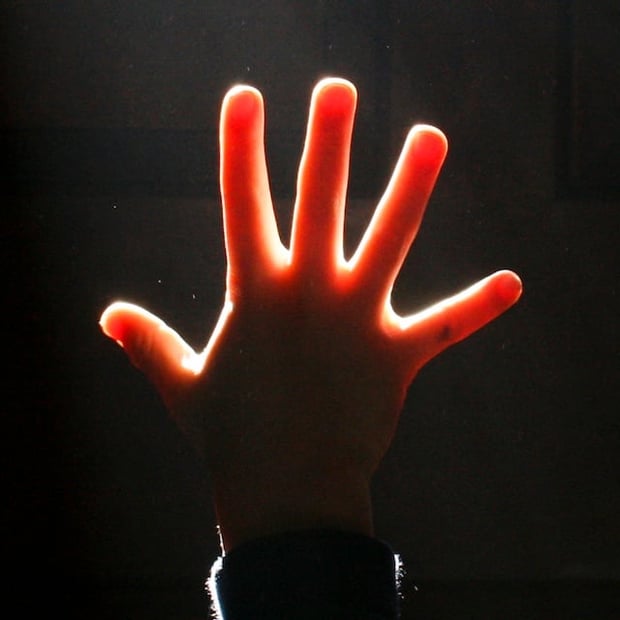 Image via Wikipedia Commons
Image via Wikipedia Commons
I'm not going to be a snob and discount other instrumentalists' right to say their craft requires special attention and unique skill. However, I will say that piano is undoubtedly among the toughest instruments to holistically master. In order to protect your musical longevity as a pianist, it's important to take time to condition your muscles, properly exercise your tendons and ligaments, and ensure your joints are cared for. Key areas we'll focus on in the below exercises are knuckles, wrists, forearms, shoulders, and the surrounding muscles. In order to flawlessly execute more technical pieces, you must acquire enough muscle memory and strength to be able to relax your entire body, because when you're tense, you're hindered and at risk of injury.
To help your muscles relax
1. Deep breathing
Don't forget to focus on the visceral nature of any instrument. The piano is an extension of your heart and soul. The minute you sit down to practice or deliver a Ravel concert piece, slowly inhale through your nose and exhale through your mouth three times, mentally counting for four seconds in and out each time. Not only will this get more blood (and oxygen) flowing to your brain, it will actually force your muscles to ease up.
2. The arm warm-up
The video above does a phenomenal job of explaining how to prepare for a long practice session so your muscles and joints aren't fatigued. It's important to extend your arms out fully when doing these exercises, but not locking your elbows.
3. The shoulders
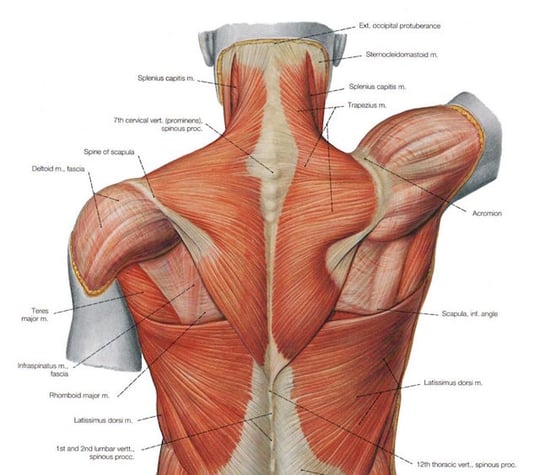 Image via anatomypart.com
Image via anatomypart.com
I would recommend breaking every 20 minutes and doing a sequence of 10 or more slow and controlled shoulder raises and rolls (holding your arms out by your sides fully relaxed to ease any tension in your upper back). The rear deltoids (anterior deltoid fascia, pictured above), trapezius, and lat muscles (latissimus dorsi) are the most commonly fatigued muscles in the upper back that pianists encounter. Also try extending both of your arms out to the sides, parallel to the ground even with your shoulders, and push them back, squeezing your shoulder blades together.
4. The wrists
Carpal tunnel, osteoarthritis, and rheumatoid arthritis are real conditions professional musicians suffer from. The first step is recognizing the symptoms of muscle strain. These include:
- Hand/wrist pain or tingling sensations
- Numbness or weakness in your fingers and arms
- Diffuse pain radiating towards the forearms
- Poor blood circulation and cold hands
- Sore shoulders/neck
- Involuntary movements/spasms in muscles
If you're practicing and ever experience any of these, it's time to take a break. Stress balls are actually quite beneficial in helping to contract and expand the muscles in your wrists. Try making two fists, hold your arms out like you're driving a car, and just tilt your wrists up and down, side to side, and eventually in circular motions. Be careful not to squeeze your fists too tightly, as this will add to any tension previously created. Go slow at first, gradually increasing your tempo. If you hear any pops or clicks, find a flat surface like a table top, and spread your hands and fingers out, and push gently push down on the surface for 20 seconds, allowing your forearms to relax.
To improve dexterity and comfort
1. Individually strengthen each finger
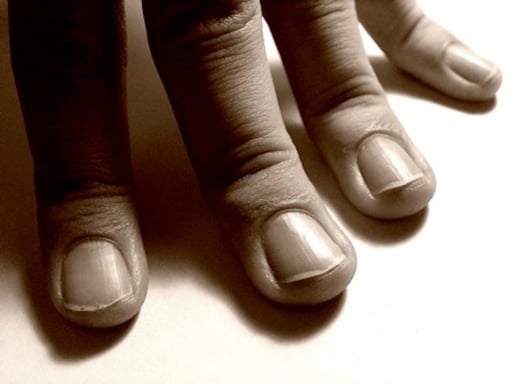 Image via theeveryman.com
Image via theeveryman.com
Find a stable flat surface, spread your fingers apart like you're making a Thanksgiving turkey, and push down in a light series of gentle pulses. Allow your knuckles to bend slightly, and try to relax your wrists as much as possible. These microcontractions and expansions of the muscles will actually help make microscopic tears in the muscle tissue that will help strengthen them over time.
2. Bear claws
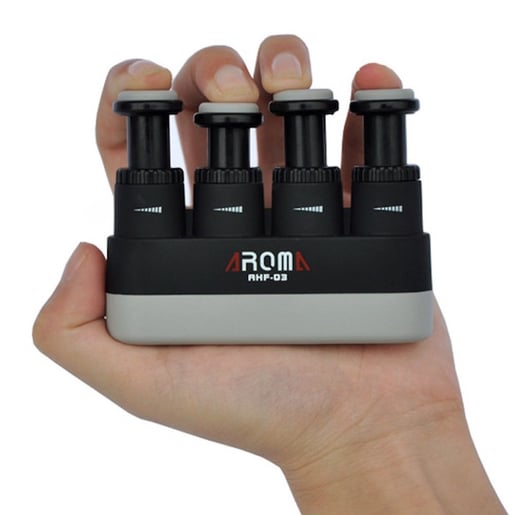 Image via aliexpress.com
Image via aliexpress.com
You can buy adjustable strength gripping devices for fingers for less than $10. Use them regularly before and after practice sessions to improve finger independence and knuckle strength. If you want an unweighted version of these exercises, just hold your hands up with your fingers spread apart, and slowly contract the muscles to make bear claws, then quickly open them back up and repeat the sequence.
3. Keep that "bird cage" hand shape
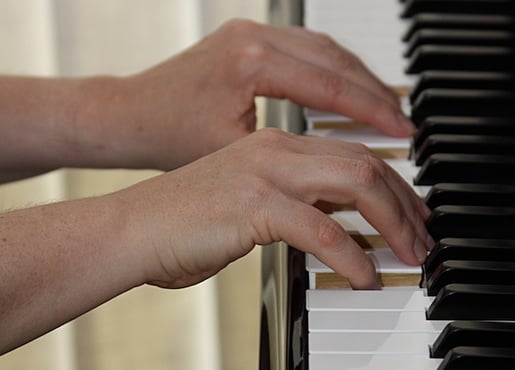 Image via melaniespanswick.com
Image via melaniespanswick.com
Anyone who's ever taken piano lessons has probably heard the phrases "bird cage hands" or "tennis ball hands." For finger dexterity, this elevated curved position is important to help allow a larger range of motion in your fingers' attack range, and maximum mobility in your joints. To help condition these muscles and ease any tension built up in intense practice sessions, use finger grips (pictured below) on a daily basis.
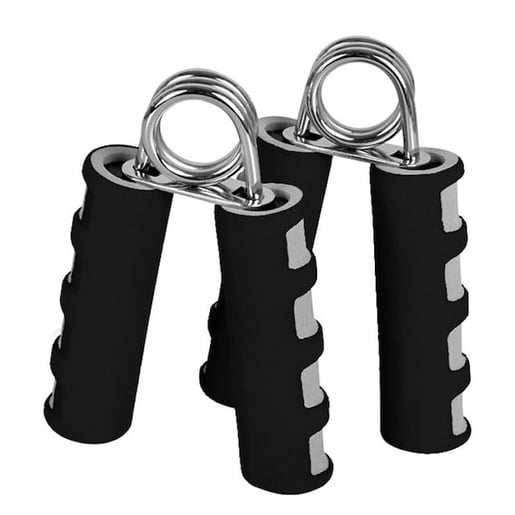 Image via aliexpress.com
Image via aliexpress.com
4. Resting finger independence exercises
 Image via adultpianolesson.com
Image via adultpianolesson.com
Place your hands on a table or any other flat surface as though you were resting your fingers on the keys. "Perform" the sequence 1-3-5-2-4 (thumb, middle finger, pinkie, index finger, and ring finger), repeating it for a minute. Change up the rhythm, making patterns or sequences of eighths and sixteenths, and even dotted values to make the exercises more advanced. Your thumb, index, and middle fingers are more dominant fingers, so you'll want to ensure your ring finger and pinkie are able to keep up, while keeping the 1-3-5-2-4 progression intact.
Caleb Hsu is an independent vocal producer and freelance recording engineer based in Los Angeles. As a classically trained pianist and composer, he enjoys writing music technology features that combine his psychology background with current industry trends.







